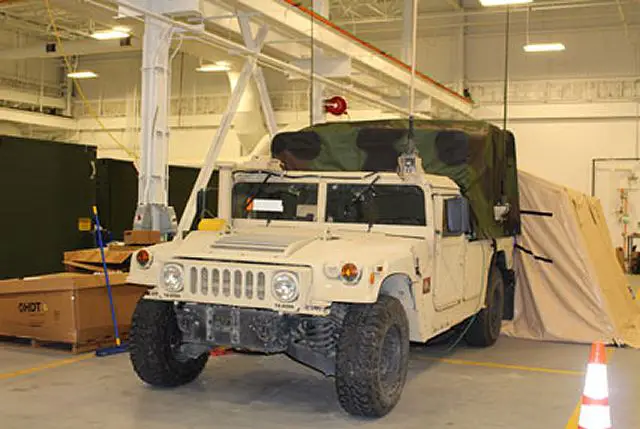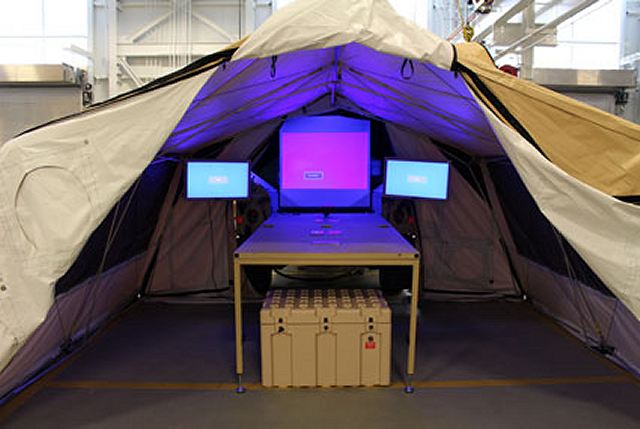United States Army try to find new solutions for a new Mobile Command Post 12307152
|
|
|||
|
Military Defense Industry Technology - US Command Post vehicle
|
|||
|
|
|||
| United States Army try to find new solutions for a new Mobile Command Post. | |||
|
The U.S. Army’s push to establish a leaner, more rapidly deployable force is driving the need for innovative solutions that allow commanders to establish their command posts faster than ever. The Expeditionary Command Post Capabilities project, or ECPC, addresses this shift to maneuver-oriented operations by delivering flexible command post designs and technology demonstrators that keep commanders “on-the-move and at-the-ready” from company through corps.
|
|||
|
|
|||
 The Light Mobile Command Post, or L-MCP, transforms into a TAC on wheels within minutes at the halt. (U.S. Army CERDEC photo by J. Tyler Barton The Light Mobile Command Post, or L-MCP, transforms into a TAC on wheels within minutes at the halt. (U.S. Army CERDEC photo by J. Tyler Barton |
|||
|
|
|||
|
Driving this effort is the complex world that the Army now faces, which demands “expeditionary forces” that are task-organized and deployed on short notice to austere locations. These forces must conduct operations immediately upon arrival in order to win against increasingly capable and elusive enemies. The U.S. Army Training and Doctrine Command, or TRADOC, teamed with CERDEC to implement ECPC. CERDEC’s Command, Power and Integration Directorate is leading the effort for CERDEC and is leveraging its C4ISR Prototype Integration Facility to help refine the requirements. “Through collaboration with our CERDEC Mission Command partners, we have applied our engineering and integration services to design and demonstrate TRADOC’s concepts into three, expeditionary command post configurations -- all within nine months,” said Christopher Manning, chief, CERDEC CP&I Prototyping, Integration and Testing Division. “All three of these designs are now ready for real-world testing and validation by Soldiers.” For brigade and below, CERDEC designed the Light-Mobile Command Post, or L-MCP, which integrates a light vehicle with command post functions. The quick erect tent provides a fold-out integrated standing height table, chairs, lightweight large screen displays, tactical network components, converged voice communications and mission command systems to form a Tactical Command Post, or TAC. “The L-MCP product objectively allows Soldiers to establish a robust TAC within five minutes at the halt,” said Jim Clarke, ECPC systems engineer. “The streamlined configuration allows for an even quicker tear down should an emergency situation arise.”
|
|||
|
|
|||
 The Light Mobile Command Post, or L-MCP, includes a quick-erect tent, fold-out internet-configured table, monitors and a large screen. (U.S. Army CERDEC photo by Kathryn Bailey) The Light Mobile Command Post, or L-MCP, includes a quick-erect tent, fold-out internet-configured table, monitors and a large screen. (U.S. Army CERDEC photo by Kathryn Bailey) |
|||
|
|
|||
|
The engineering team also discovered during evaluations with Soldiers that when co-located with a main command post, the L-MCP could be used as the command post’s “plans” section without additional reconfiguration. This capability enables a much greater degree of agility and flexibility for the unit to scale its command post resources to fit the needs of the operation. In the back of L-MCP, the modular mounted rack system provides direct access to cables, houses all of the communications and mission command equipment and includes Warfighter Information Network-Tactical, or WIN-T, Increment 1 wireless connectivity. What makes the L-MCP even more expeditionary is its use of onboard vehicle power, which enables the L-MCP to operate as a command post without having a large and heavy generator mounted on the truck or on a towed trailer, Clarke said. “By not carrying or towing a generator, the increased mobility Soldiers will gain could be a game changer for the TAC,” Clark said. The L-MCP was developed to scale to the Joint Light Tactical Vehicle, or J-LTV, the Army’s longer-term solution to field light vehicles. By integrating a Humvee today, the Army may also retrofit its current fleet to provide expeditionary command post options, Barton said. “It will take several years for the Army to transition to the J-LTV, but we believe the L-MCP could be a cost effective and feasible interim solution,” Barton said. To extend command post capabilities to heavier units, ECPC has designed the Combined Arms Battalion (CAB), Mobile TAC, which is an M1068 tracked vehicle with integrated mission command and radio capabilities, allowing commanders to “command from the hatch.” This product integrates the WIN-T Increment 2 Point of Presence, to provide on-the-move network connectivity, both line-of-sight and beyond-line-of-sight. The CAB Mobile TAC could also be tailorable to a future Army vehicle, such as the armored multipurpose vehicle, or AMPV, yet could still provide a short-term expeditionary solution for the Army, Barton said.
|
|||
|
|
|||
 The Expeditionary Battalion Command Post, or EXP BN CP, leverages a prototype shelter structure that requires two Soldiers just two minutes to expand each side of the structure. (U.S. Army CERDEC photo by J. Tyler Barton) The Expeditionary Battalion Command Post, or EXP BN CP, leverages a prototype shelter structure that requires two Soldiers just two minutes to expand each side of the structure. (U.S. Army CERDEC photo by J. Tyler Barton) |
|||
|
|
|||
|
The third component of the ECPC project delivers increased mobility to the traditional, tent-based command post. For battalion through corps, the Expeditionary Battalion Command Post, or EXP BN CP, leverages a prototype shelter structure with work tables, projectors, laptops, mission command systems and a pre-configured interior with power and Internet to establish the current operations cell.
“It requires two Soldiers just two minutes to expand each side of the structure,” Clarke said. “We expect the complete set-up time to be half of the current tent-based system, which translates to roughly 30 minutes from ‘box drop’ to full operations.” Depending on the mission, the EXP BN CP could be transported using a Palletized Load System or by using a helicopter sling-load. While this method may not be available to all battalions, by delivering a technology demonstrator, the Army can now better assess the benefits versus cost of shelter-based command posts. Soldiers of the 1st Squadron, 1st Cavalry Regiment (1-1 CAV), 2nd Brigade Combat Team, 1st Armored Division (2/1 AD) will evaluate ECPC’s design products during this fall’s Network Integration Evaluation, or NIE 16.1 at Fort Bliss, Texas. “The 1-1 CAV will jump their main command post numerous times and deploy further north than any other unit, so all three of our products will see a lot of action,” Barton said. CP&I engineers continue to refine these existing designs and technology demonstrators and explore new options to help mature the Army’s expeditionary command post effort and exploit the advances being made in science and technology. “When it comes to command posts, we like to draw a three-circle VEN diagram of facilities, network and mission command capabilities,” Barton said. “Our expertise is where those circles intersect in the middle to form a truly integrated command post capability.” |
|||


























